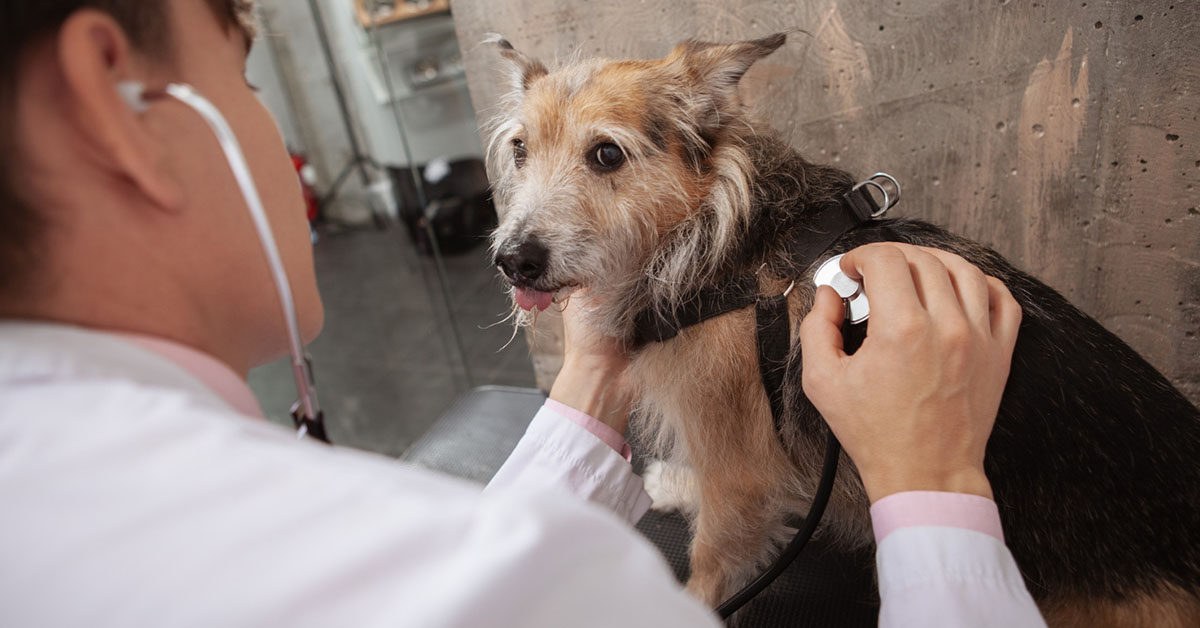Hyperadrenocorticism, also known as Cushing’s disease, is a common endocrine disorder that causes dogs to overproduce cortisol, their stress hormone. The early detection and appropriate treatment of this condition are crucial to keeping your dog healthy. Thus, dog owners need to understand the symptoms and how to treat Cushing’s disease in dogs.
In this guide, we’ll cover how to diagnose the disease, surgical and medical options, lifestyle tips, and long-term management. This resource provides clarity and support for pet owners facing the daunting reality of managing their dog’s Cushing’s disease. Let’s explore how to best care for your dog with Cushing’s disease.
What is Cushing’s Disease in Dogs?
Cushing’s disease, or hyperadrenocorticism, is a hormonal disorder that produces high amounts of cortisol in dogs. A malfunctioning adrenal gland or too much corticosteroid use can cause this. It causes increased thirst and urination, weight gain, plump appearance, hair loss, and muscle weakness.
Due to the condition’s gradual onset and range of symptoms, it’s hard to diagnose. But early diagnosis and treatment will improve your dog’s quality of life and manage the disease.
Signs of Cushing’s Disease in Dogs

In order to detect and treat Cushing’s disease in dogs early, you must recognize the signs. The following symptoms are common:
- Increased thirst and urination
- Excessive appetite
- Weight gain
- Lethargy
- Muscle weakness
- Pot-bellied appearance
- Hair thinning or loss, especially on the body and tail
- Continual skin infections
How to Diagnose Cushing’s Disease in Dogs
A Veterinarian performs a comprehensive examination on dogs in order to diagnose Cushing’s disease. The diagnostic process typically includes:
- Physical Examination: Your veterinarian will conduct a thorough physical examination to check for signs of Cushing’s disease in your dog.
- Blood Tests: A complete blood count (CBC) and biochemical profile can give your vet a lot of info about your dog’s hormone levels and organ health.
- Urine Tests: As part of the diagnosis of Cushing’s disease, urine tests may be conducted to assess urine concentration and detect abnormalities.
- Adrenal Function Tests: Various tests, like low-dose dexamethasone suppression test and ACTH stimulation test, can determine adrenal function and diagnose Cushing’s disease.
- Imaging Studies: Ultrasound or X-rays can be used to image the adrenal glands and identify any abnormalities.
- Endocrinology Consultation: Sometimes, a veterinary endocrinologist is needed to interpret the results of specialized diagnostic testing.
A proper diagnosis is vital to developing a treatment plan tailored to your dog’s specific needs. Whenever you suspect your dog might have Cushing’s disease, take him to the vet right away for an evaluation and diagnosis.
How to Treat Cushing’s Disease in Dogs

Treatment for Cushing’s disease in dogs aims to manage symptoms, reduce cortisol levels, and improve quality of life. These are some of the standard treatment options:
Medical Management
The primary treatment for Cushing’s in dogs is medication to control cortisol production and relieve symptoms. Often prescribed drugs like trilostane and mitotane reduce cortisol levels by inhibiting adrenal gland function. It takes careful monitoring and dosage adjustments to get optimal control of this disease.
It is essential to have veterinary check-ups and blood tests regularly to monitor cortisol levels. You must follow your veterinarian’s recommendations closely and stick to the prescribed medication schedule.
Surgical Treatment
If medical management doesn’t work or isn’t feasible, surgery may be an option. The surgical removal of one or both adrenal glands is often recommended for dogs with adrenal tumours causing Cushing’s disease.
However, surgery is a complex procedure that carries risks, such as bleeding, infection, and adrenal insufficiency. Furthermore, not all dogs are suitable candidates for surgery, and factors such as the size and location of the tumor must be carefully evaluated.
Alternative Therapies
Some dog owners try alternative or complementary therapies in addition to conventional treatment. Alternative approaches include herbal supplements, acupuncture, and dietary changes.
These therapies may help some dogs, but their efficacy and safety vary, and not all alternative treatments are scientifically justified. You should discuss alternative therapies with your veterinarian before incorporating them into your dog’s treatment plan.
Lifestyle and Dietary Modifications
In addition to medical and surgical interventions, lifestyle and dietary changes are crucial to managing Cushing’s disease in dogs. Maintaining a balanced diet tailored to your dog can help him manage his weight and stay healthy. Regular exercise is also beneficial for maintaining muscle tone and cardiovascular health.
A consistent routine can help reduce your dog’s cortisol levels and improve his well-being. A veterinary nutritionist or behaviorist can help you optimize your dog’s lifestyle to manage Cushing’s disease.
Follow-Up Care

Regardless of the treatment approach, follow-up care and monitoring are crucial to managing Cushing’s in dogs. Your dog needs regular vet visits so that you can monitor cortisol levels and adjust the treatment plan as needed. It’s crucial to follow medication schedules and lifestyle recommendations to keep your dog healthy. Your veterinarian will develop a comprehensive follow-up care plan tailored to your dog’s needs.
FAQs
What is the best treatment for Cushing’s disease in dogs?
The best way to treat Cushing’s disease in dogs depends on the severity, the presence of underlying tumors, and the dog’s overall health. The most common treatment option is medication management, such as trilostane or mitotane. A veterinarian determines the most appropriate treatment for your dog based on thorough diagnostic evaluations and discussions.
How long can a dog live with Cushing’s disease?
The American Kennel Club says the average lifespan for a dog with Cushing’s disease is two years, with just 10 percent living beyond four years. The majority of Cushing’s disease cases are diagnosed in elderly dogs, which can affect their overall life expectancy.
However, individual results may vary depending on the dog’s overall health, the effectiveness of treatment, and any underlying conditions. Dogs with Cushing’s disease benefit from regular veterinary care and adherence to treatment plans.
What do you feed a dog with Cushing’s disease?
The diet plays an essential role in the management of Cushing’s disease in dogs. It’s usually recommended to provide a balanced diet with high-quality proteins, moderate fats, and complex carbs. Foods high in sugar and carbohydrates can exacerbate symptoms. Additionally, consider feeding smaller, more frequent meals to help manage blood sugar levels.
Veterinarians may recommend a Cushing’s disease diet, which may include added vitamins and minerals to support overall health. You should consult your veterinarian about what diet is best for your dog.
What happens if Cushing’s is left untreated?
Untreated Cushing’s disease in dogs can lead to worsening symptoms, increased risk of infections, development of secondary conditions like diabetes, and decreased quality of life. Early treatment is crucial for initiating appropriate treatment and preventing complications.
Read More: What Is the Best Way To Clean Dog’s Ears
The Takeaway
Understanding and treating Cushing’s disease in dogs requires vigilance and compassion. Fortunately, multiple treatment options are available, tailored to each dog’s needs. The best way to deal with Cushing’s is to talk to your veterinarian. Staying informed, advocating for your pet’s health, and prioritizing their well-being can give them the best chance of survival.




